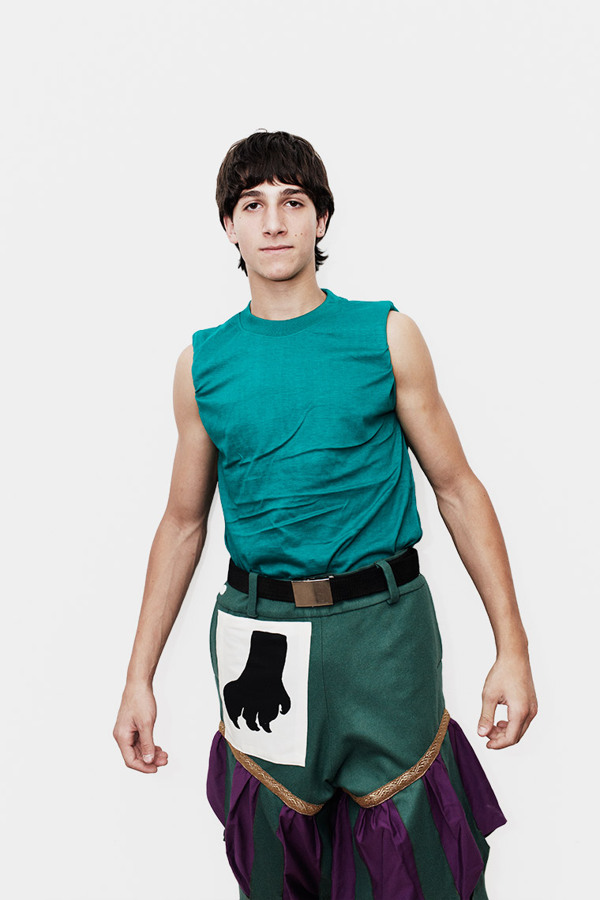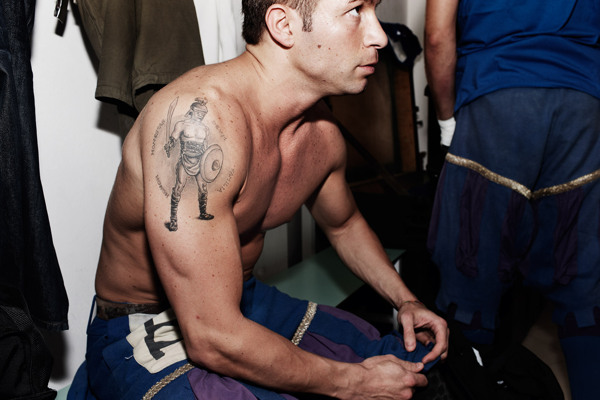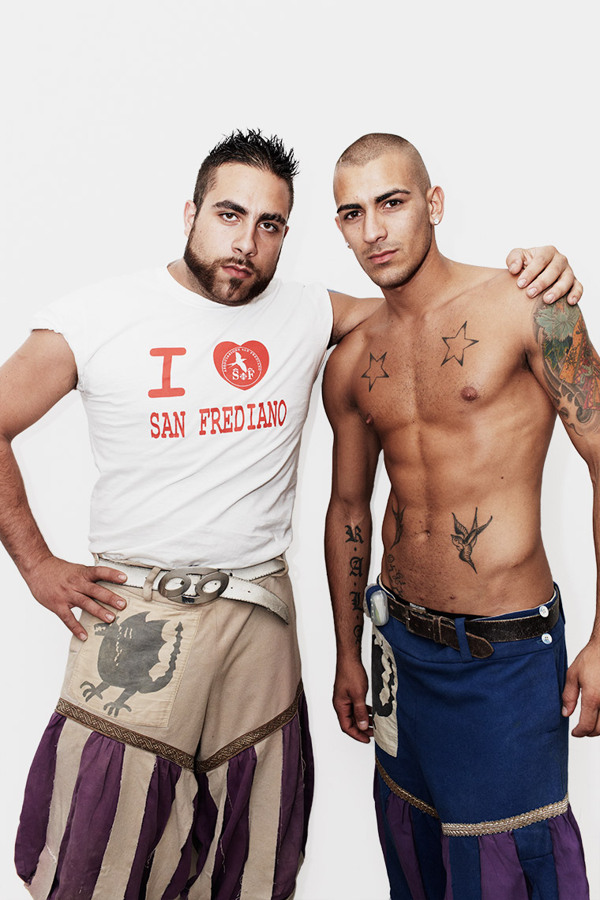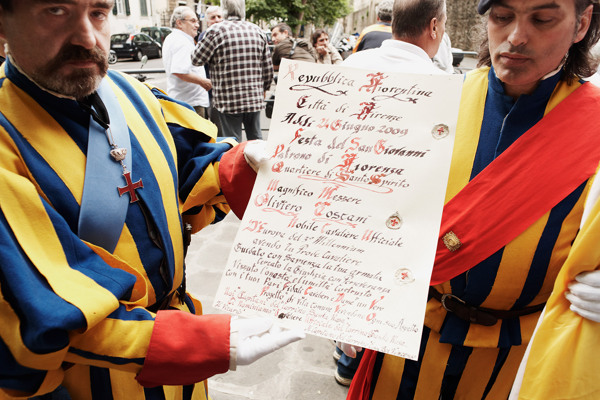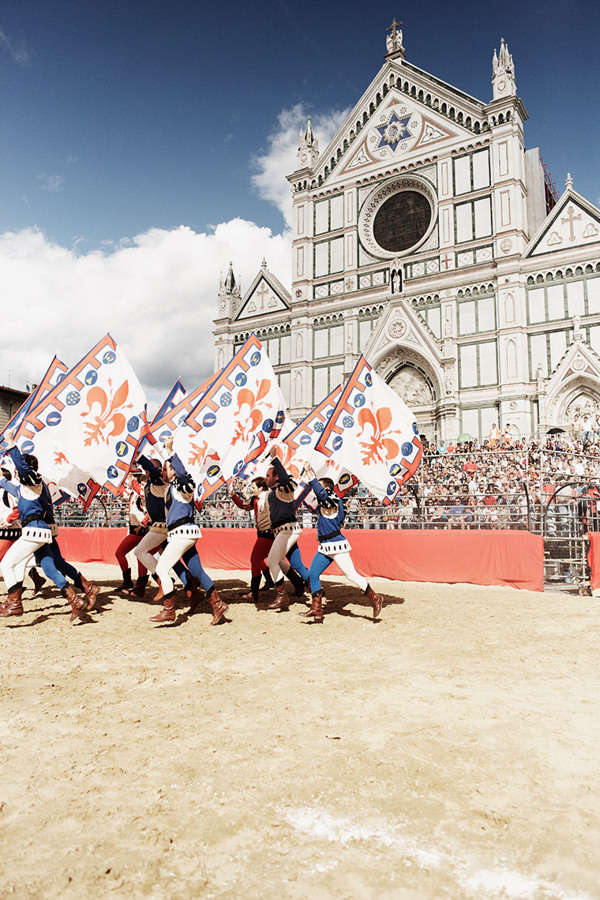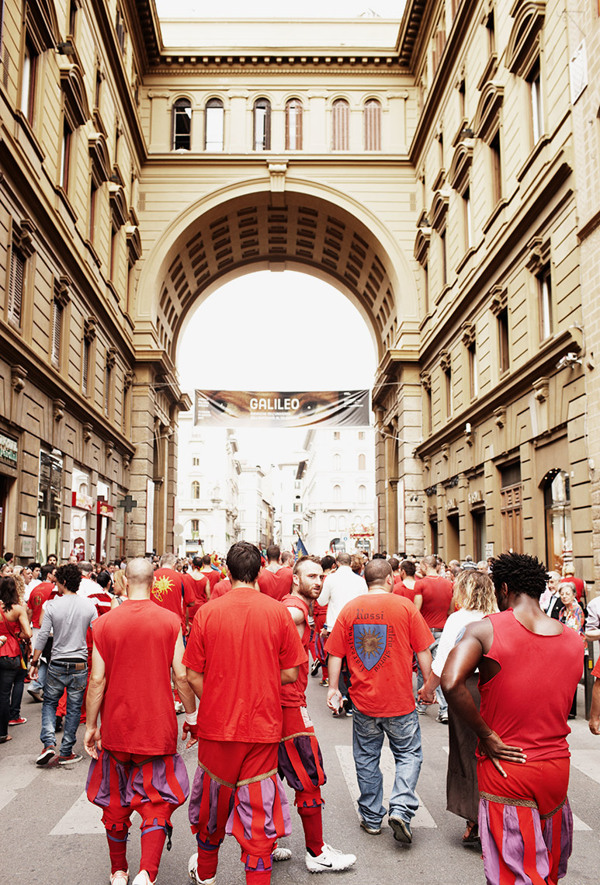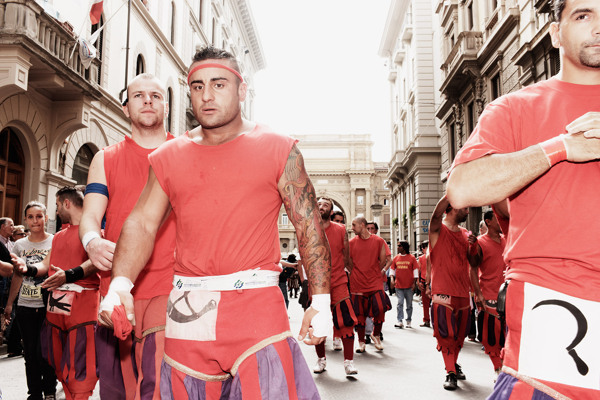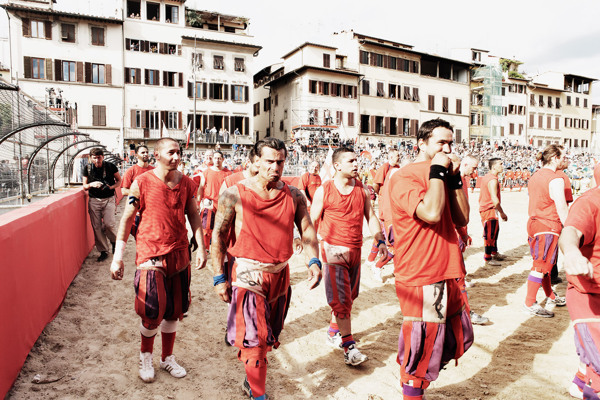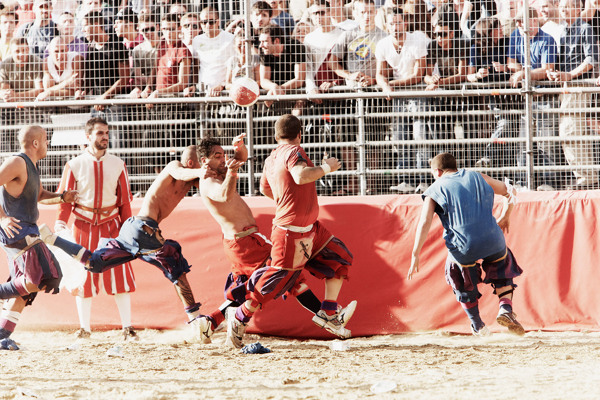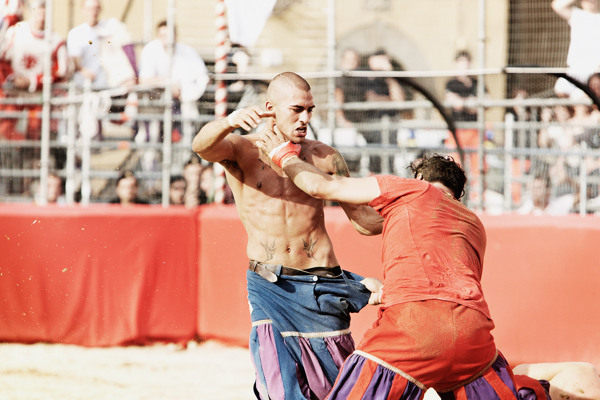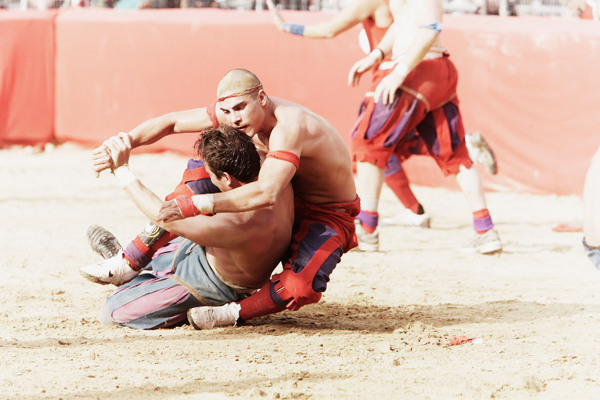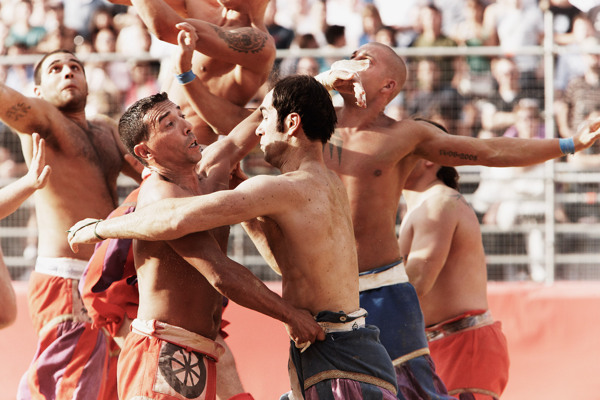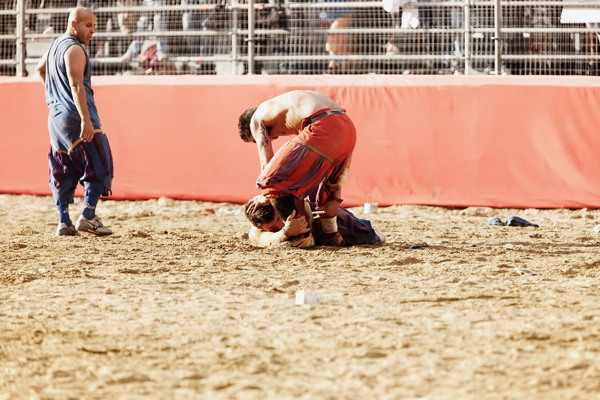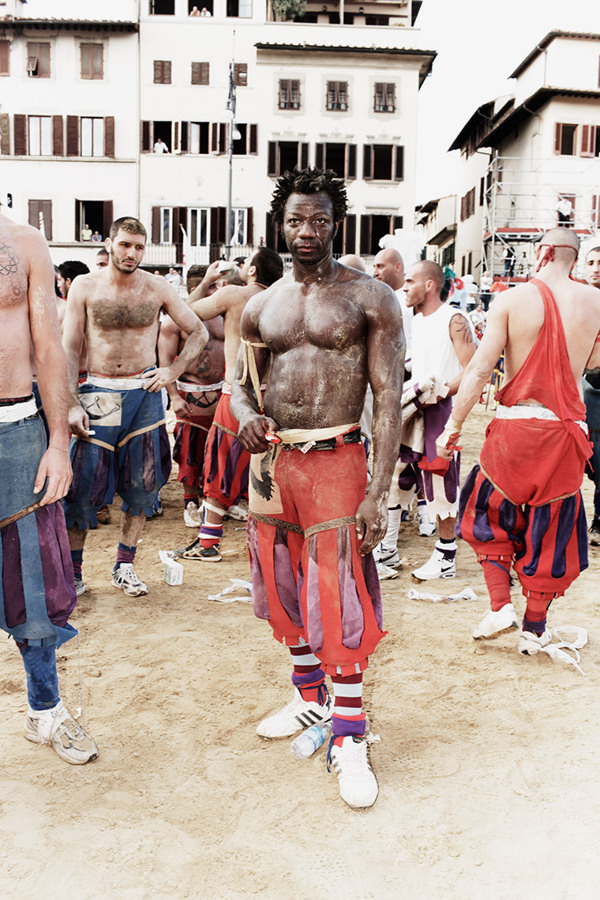CALCIO FIORENTINO BY MARCEL KENTIN

Calcio Fiorentino was an early form of football that originated in 16th century Italy. The Piazza Santa Croce of Florence is the cradle of this sport, that became known as giuoco del calcio fiorentino ("Florentine kick game") or simply Calcio (later being the name applied to football in Italy).
The official rules of Calcio were published for the first time in 1580 by Giovanni de Bardi, a Florentine count. Just like the Roman game harpastum, it was played in teams of 27, using both feet and hands. Goals could be scored by throwing the ball over a designated spot on the perimeter of the field. The playing field is a giant sand pit with a narrow slit constituting the goal, running the width of each end. There is a main referee, six linesmen and a field master. Each game is played out for 50 minutes with the winner being the team with the most points or 'cacce'.
Originally, Calcio was reserved for rich aristocrats, who played every night between Epiphany and Lent. In the Vatican, even Popes, such as Clement VII and Urban VIII were known to play.
The sport was not played for around two hundred years but then revived in the twentieth century when organised games began again in 1930. Today, three matches are played each year in Piazza Santa Croce, in the third week of June, with four teams facing each other in the first two games. The winners go to the final, which occurs on June 24, the day of the Saint Patron of Florence, San Giovanni.
The modern version allows tactics such as head-butting, punching, elbowing, and choking, but forbids sucker punching and kicks to the head.



